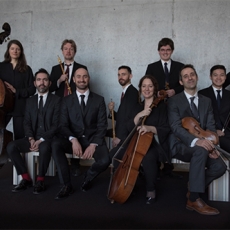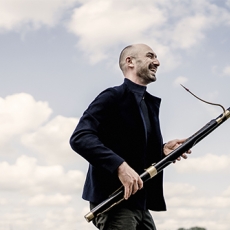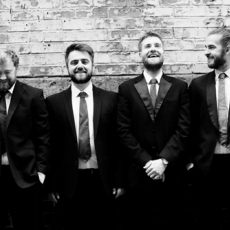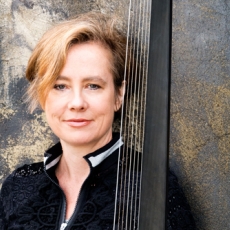Ensemble Marsyas - Edinburgh 1742, Parte seconda - Musica dei Donum
This disc is largely devoted to music from the pen of the Italian-born Francesco Barsanti. The music selected for this recording was published in 1742 in Edinburgh, where the composer lived at the time.
Barsanti was one of the many Italian performing musicians and composers who moved to London to look for employment. He arrived there in 1714, together with his friend Francesco Geminiani; both were from Lucca. For a number of years he played the flute and the oboe in the orchestra of the Italian opera. In 1735 he married a woman from Scotland. He developed a special liking for Scottish tunes which he arranged or incorporated into his compositions. He found aristocratic patrons in Scotland and composed some of his best music, his Concerti grossi op. 3 and his Overtures op. 4. In 1743 he returned to London where he started to work as a viola player. From that time he gave up writing any original compositions.
This is the second disc the Ensemble Marsyas devotes to Barsanti. The first was released in 2017 and includes the first five concerti of the Op. 3, whereas the present disc consists of the remaining five concerti. This set is quite remarkable for various reasons. First of all, it comprises ten concertos, whereas collections of sonatas or concertos usually came in sets of six or twelve. Second, the scoring is rather unconventional. The collection is divided into two halves, of five concertos each. To the usual strings and basso continuo Barsanti adds parts for two (French) horns and timpani in the first five concertos, and for two oboes, trumpet and timpani in the remaining five. The inclusion of timpani was unheard of. Barsanti's concerti grossi are the first ever with parts for timpani. The participation of horns and trumpet in concerti grossi was also not very common, but their taking part in the orchestra had some precedents, for instance in Handel's Water Music.
In particular the inclusion of a trumpet part in the concertos 6 to 10 is notable, as concerti grossi were intended for amateur musical societies, which mostly did not include players of the trumpet. As Michael Talbot, in his liner-notes, states: "The trumpet was not normally regarded as an instrument suitable for gentlemen to play (...)". He then refers to James Macfarlane, one of the subscribers of the set, who was a member of the Philharmonic Society in Dublin who had family links to Edinburgh. He apparently was an amateur trumpeter as his name appears on the trumpet part of the set preserved in Trinity College, Dublin. This is the Philharmonic Society's own subscription copy. Talbot points out that in Edinburgh, military trumpeters were available to play that part.
If we look at the concertos 6 to 10 individually, there is something striking about everyone of them. Barsanti had a strong preference for counterpoint. Most of the second movements are fugues, but those in the concertos 8, 9 and 10 are double fugues. In the third movement of the Concerto No. 8 the two violins play a strict canon at the unison. The last movements starts with a drum roll. Concerto No. 6 opens in the manner of a French overture: the first movement has the typical dotted rhythms of such a piece, whereas the second is fugal. The third movement of the Concerto No. 7 is a duet for two muted violins, without the participation of any other instrument. The last movement is a pair of minuets; in the second section of the second minuet the first violin has to play long notes with a vibrato prescribed in the score. The Concerto No. 9 opens with a movement which is dominated by oboes, trumpet and timpani; here the strings are reduced to a supportive role. The Concerto No. 10 consists of six movements (all the other concertos have four). The third movement includes a solo part for muted violin, with the indication ad Imitation' d'Echo. When the ensemble takes a rest, the solo violin repeats the last phrase. In several movements of these concertos, Barsanti creates strong contrasts by juxtaposing passages for strings alone and episodes with trumpet and timpani.
Barsanti is one of the lesser-known composers from the first half of the 18th century. Only now and then he turns up in concert programmes and on disc, mostly with some Scottish tunes. These represent another remarkable feature of Barsanti and his oeuvre. He was not the only composer who became interested in folk music. It was part of a generally tendency, inspired by the Enlightenment which was in favour of more 'naturalness'. It was the time when Nature was seen as the source of Truth: the closer a man got to Nature, the closer he got to the Truth. It explains the attraction of exotic cultures, often associated with the 'noble savage', especially those outside Europe - one can think here of Rameau's Les Indes Galantes. However, the Enlightenment also discovered the folklore of European cultures.
The interest in Scottish folk music was also politically motivated. In 1707 Scotland and England became one kingdom under the name of 'Great-Britain' as a result of the Act of Union. Many Scots considered this an attempt at assimilation, at the cost of their own identity. It encouraged representatives of Scottish culture to try to keep alive or to bring back what was considered typically Scottish. In the first half of the 18th century a number of collections of Scottish songs were published. Some of these included melodies, but others only mentioned the titles of melodies to which the texts could be sung. These collections are also the sources for the arrangements by some of the major composers of the classical period, Haydn and Beethoven.
Here we get four arrangements by Barsanti. These are scored for a treble instrument and bass; the latter was to be played on cello and harpsichord, but the choice of the treble part was left to the interpreter. Taking into account the compass of this part, it can be played on oboe and transverse flute as well, but Talbot states that the violin is the most ideal option: "[The] sensitive ornamentation, comprising trills, slides and appoggiaturas, that Barsanti prescribes for the tunes can easily be made to resemble the kind of portamento or cantillation typical of vocal production in Scottish traditional music, and the violin has the edge over its competitors in this." It is remarkable how 'natural' Barsanti's arrangements sound, and that is also a compliment to the performer, Colin Scobie. For the bass part, the ensemble took the liberty to ignore the indication of cello and harpsichord; Scobie is accompanied by Elizabeth Kenny on the guitar.
As in the first volume, we also get a piece by Handel. He and Barsanti knew each other personally. In 1743 they both contributed to a collection of pieces for Princess Louisa, a former pupil of Handel, given to her before she left for Denmark to marry Crown Prince Frederik. Talbot suggests that Barsanti may have had access to Handel's private library for the material he used for his contributions. The selection of the overture to Handel's opera Atalanta makes sense, as it includes parts for two oboes and a trumpet.
When the first volume was released, I hoped that the remaining concertos from Barsanti's Opus 3 would be recorded as well. I am happy that this wish has come true, and I am just as impressed with these concertos as I was with the first five. Barsanti's cause is served very well by the Ensemble Marsyas, whose performances fully explore the qualities of Barsanti's compositions. The playing of the natural trumpet - always a demanding task - is in the safe hands of David Blackadder, whereas Alan Emslie plays the timpani with great rhythmic precision. There is some lovely violin playing by Cecilia Bernardini and Louis Creac'h. This is a very fine disc which breaks new ground and puts a composer on the map who deserves more attention.




